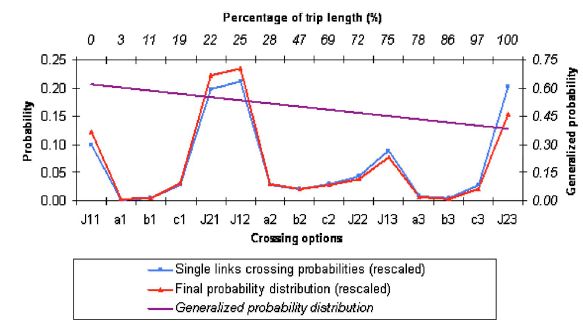
This paper presents a methodology for modeling pedestrians crossing behavior along an urban trip, as well as an algorithm for the estimation of accident risk along the trip. For that purpose, existing models are exploited and further developed. In particular, a nested logit model and a linear regression model are merged and adapted to develop a hierarchical crossing behavior model, allowing for the estimation of a distribution of crossing probabilities on an urban road link among junctions and various mid-block locations. The explanatory variables concern a set of directly measurable geometric and traffic characteristics. A second model is then developed for the estimation of the distribution of crossing probabilities along a trip in relation to the distance from the trip origin. Both models were sufficiently validated by means of appropriate surveys. On the basis of these models, a complete framework for the assessment of pedestrians crossing behavior in urban areas is developed. Moreover, a set of formulae for the calculation of accident risk along a trip in relation to the estimated crossing behavior of pedestrians is proposed.
| ID | pj30 |
| Manuscript | |
| DOI | |
| Tags | pedestrians, statistical modelling, traffic management |






